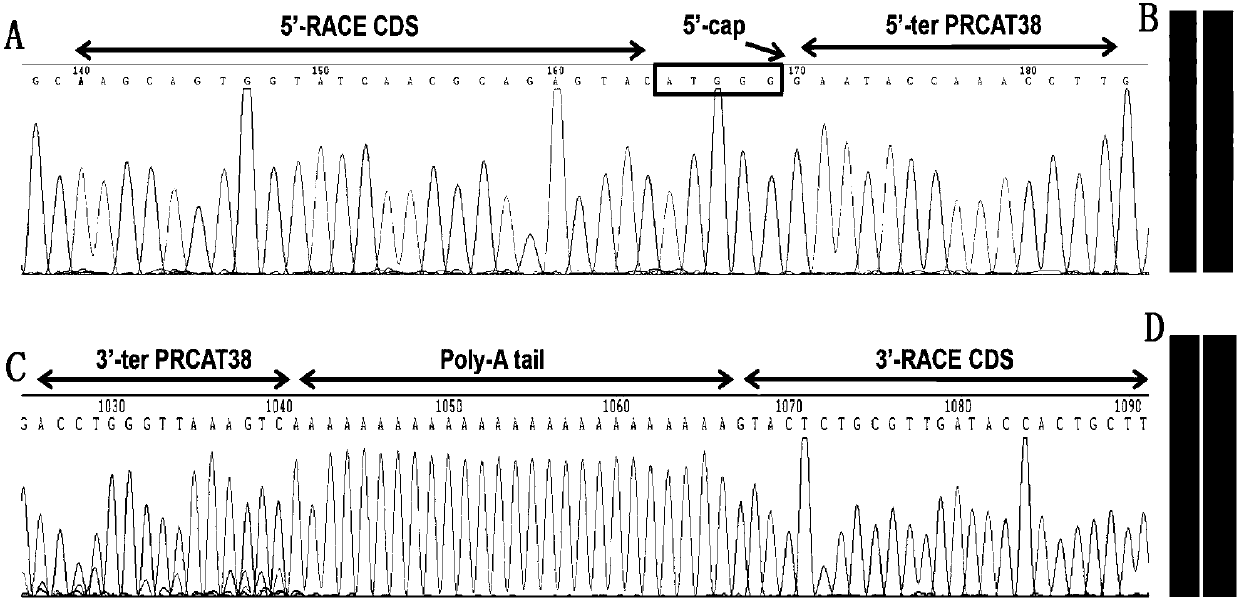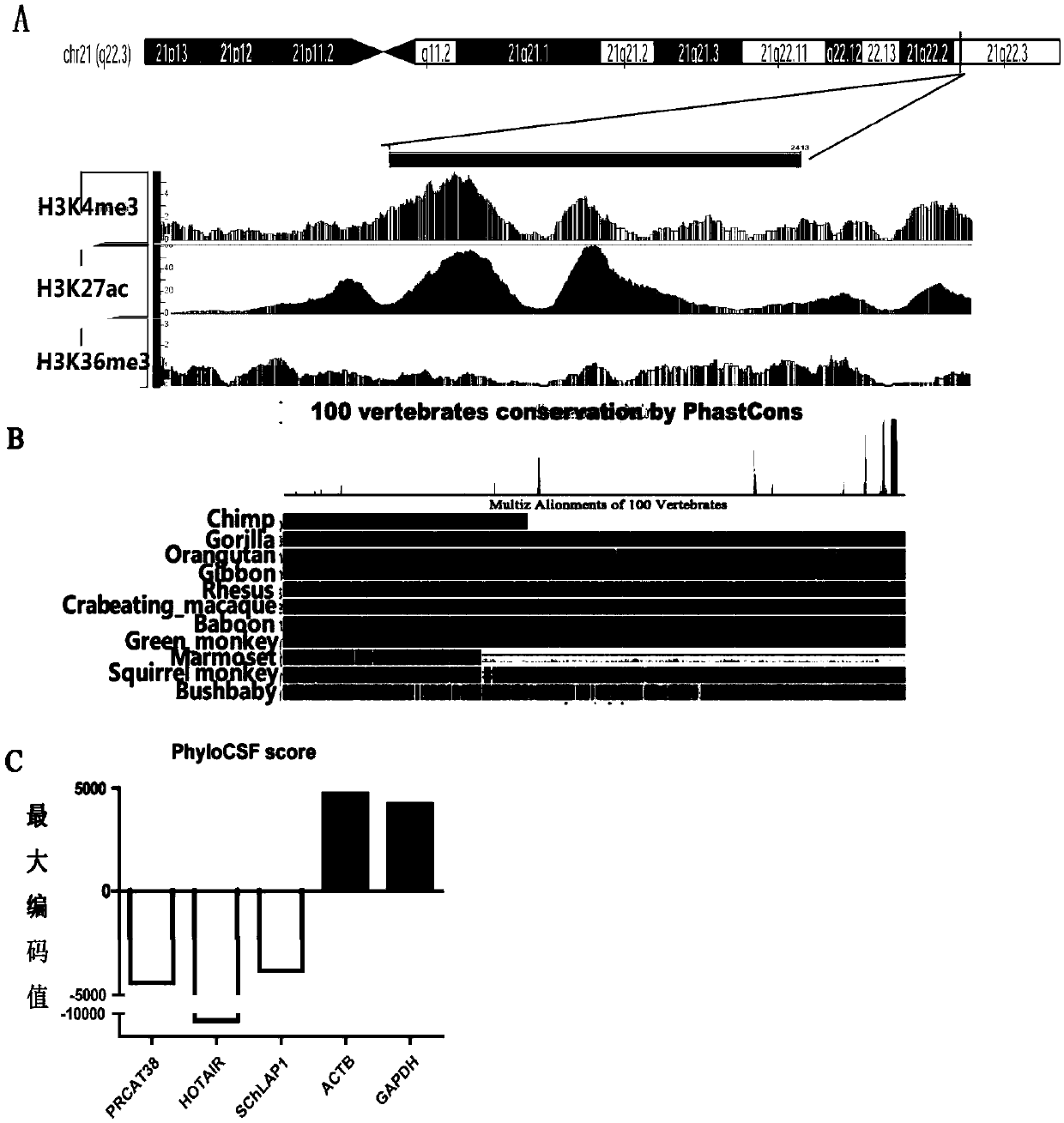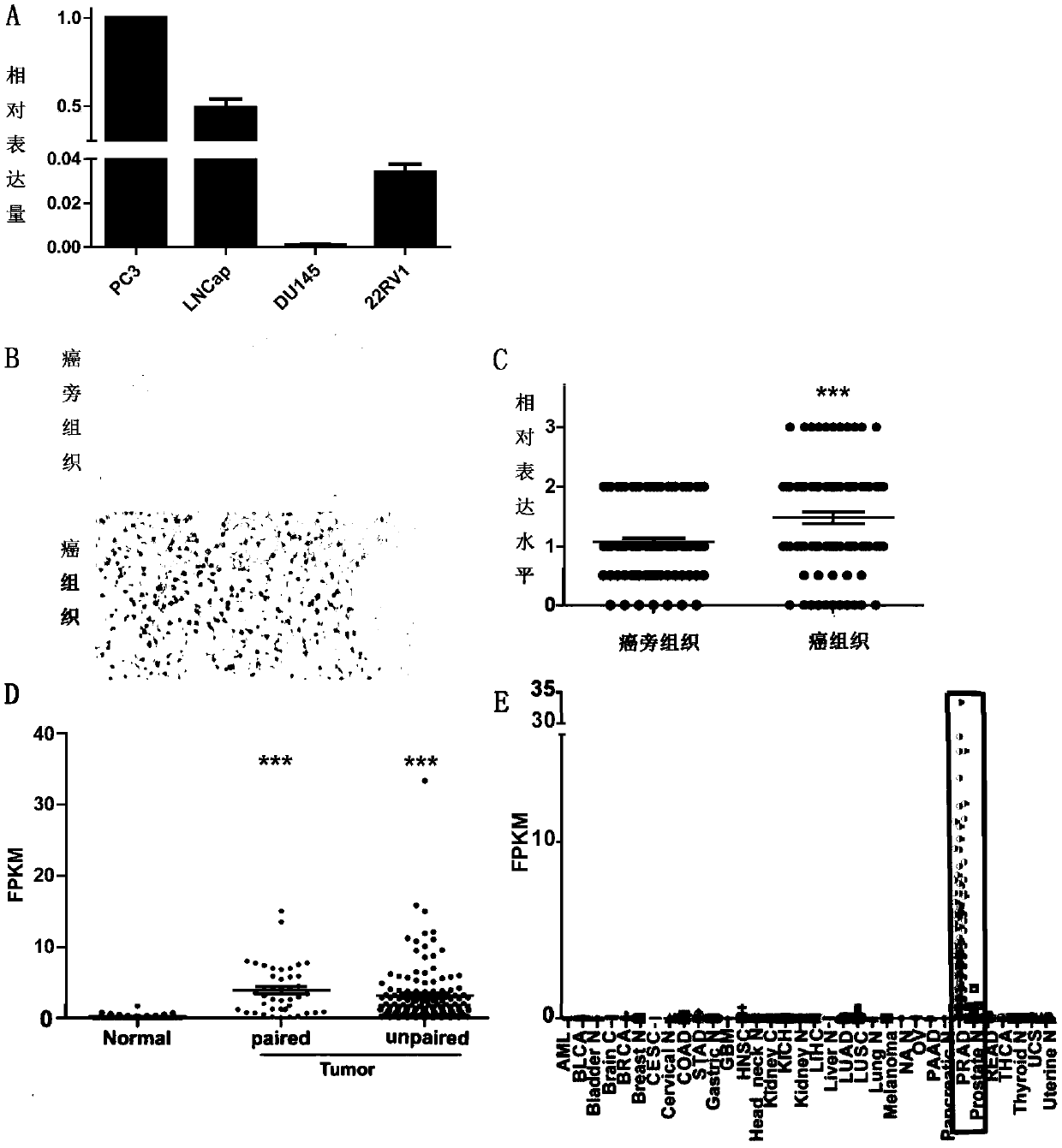Long chain non-encoding RNA sequence for early diagnosis of human prostatic cancer and its application
A long-chain non-coding, prostate cancer technology, applied in the field of cancer joint diagnostic markers, long-chain non-coding RNA expression inhibitors, can solve the problem of limiting the clinical application value of PCA3, and has not found that it can effectively or accurately detect the early occurrence of prostate cancer and other problems, to achieve the effect of accurate cDNA sequence results, high accuracy and high sensitivity
- Summary
- Abstract
- Description
- Claims
- Application Information
AI Technical Summary
Problems solved by technology
Method used
Image
Examples
Embodiment 1
[0061] This embodiment provides a method for cloning the precise full-length cDNA sequence of a long-chain non-coding RNA (PRCAT38), which specifically includes the following steps:
[0062] 1), design a set of gene-specific primers according to the known sequence of PRCAT38 in the Mitranscriptome database, named in turn as GSP1, GSP2, GSP3, GSP4, GSP5, GSP6, the primer set can specifically recognize PRCAT38, the primer set in The sequences of each primer are shown in Table 1.
[0063] Table 1 Primer sets specifically recognizing PRCAT38
[0064]
[0065] 2), extract the total RNA of human prostate cancer cell lines PC3, LNCaP, 22Rv1 and DU145, and use ThermoFisher's The reverse transcription kit of III First-Strand Synthesis System uses oligo dT as a reverse transcription primer to reverse transcribe total RNA into cDNA.
[0066] 3), use the cDNA in step 2) as a template, use the primer pair GSP1-F, GSP1-R and GSP2-F, GSP2-R, and GSP3 to amplify the PRCAT38 specific fra...
Embodiment 2
[0073] This embodiment provides a bioinformatics method to analyze the conservation, transcriptional activity and coding ability of the long-chain non-coding RNA (PRCAT38 precise full-length cDNA sequence), as follows:
[0074] 1. Use Roadmap to obtain the data of H3K4me3, H3k36me3 and H3K27ac in the prostate cancer cell line PC3, and use the ENCODE database (https: / / www.encodeproject.org / ) to obtain the data of H3K4me3, H3k36me3 and H3K27ac in normal tissues and prostate cancer tissues, The GEO accession numbers are GSE96019 (H3K4me3, PC3), GSE96418 (H3k36me3, PC3) and GSE96399 (H3K27ac, PC3), and the ENCODE Experiment IDs are ENCSR748RBT (H3K4me3, Normal prostate), ENCSR499FXI (H3k36me3, Normal prostate) 6ENCSR7 Normal prostate). The data obtained in the prostate cancer cell line PC3 were displayed on the UCSC website (http: / / genome.ucsc.edu / ), and the enrichment of H3K4me3, H3k36me3 and H3K27ac in the PRCAT38 gene promoter and gene region was obtained ( figure 2 A). Tran...
Embodiment 3
[0078] This embodiment provides a RT-PCR and bioinformatics detection of the expression of long-chain non-coding RNA (PRCAT38) in prostate cancer cells, normal prostate tissues and cancer tissues, and various other normal human tissues and cancer tissues. Specifically include the following steps:
[0079] 1. RT-PCR detection of the expression of PRCAT38 in different prostate adenocarcinoma cell lines:
[0080] (1) Primer design
[0081] Based on the full-length cDNA sequence of PRCAT38, the amplification primers for RT-PCR are designed, wherein the nucleotide sequence of the upstream primer PRCAT38-F is shown in SEQ ID NO.10, and the nucleotide sequence of the downstream primer PRCAT38-R is shown in SEQ ID Shown in NO.11.
[0082] (2) Extract the total RNA of human prostate cancer cells PC3, LNCaP, DU145 and 22Rv1 respectively according to the following method:
[0083] ①Wash a 6cm culture dish with any of the above-mentioned cells with PBS (pH 7.4), add 1ml Trizol, transfe...
PUM
 Login to View More
Login to View More Abstract
Description
Claims
Application Information
 Login to View More
Login to View More - R&D
- Intellectual Property
- Life Sciences
- Materials
- Tech Scout
- Unparalleled Data Quality
- Higher Quality Content
- 60% Fewer Hallucinations
Browse by: Latest US Patents, China's latest patents, Technical Efficacy Thesaurus, Application Domain, Technology Topic, Popular Technical Reports.
© 2025 PatSnap. All rights reserved.Legal|Privacy policy|Modern Slavery Act Transparency Statement|Sitemap|About US| Contact US: help@patsnap.com



